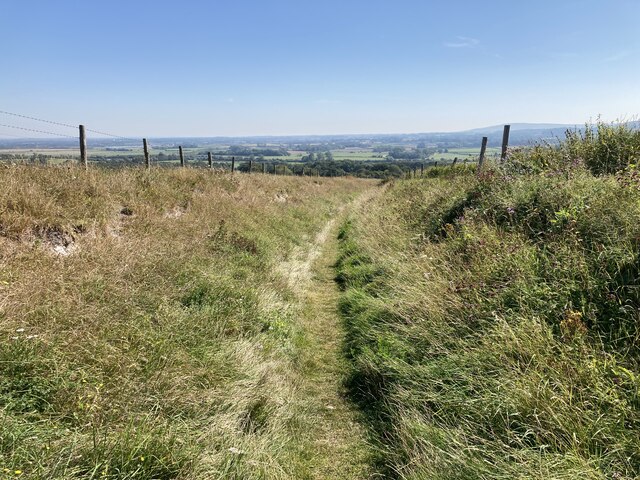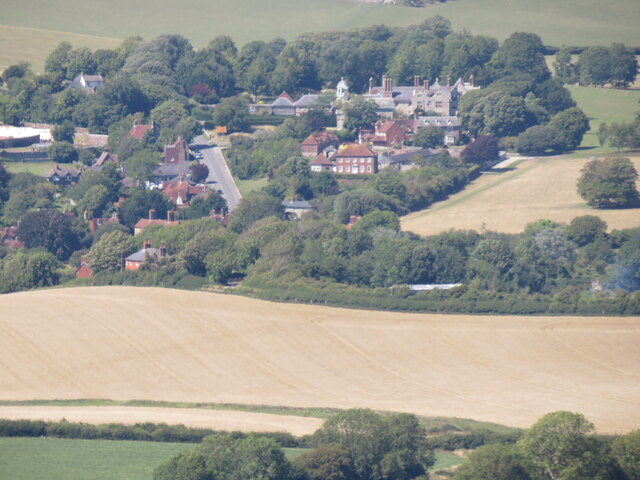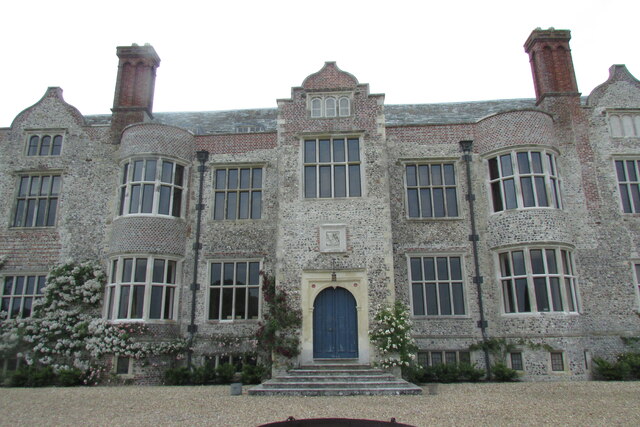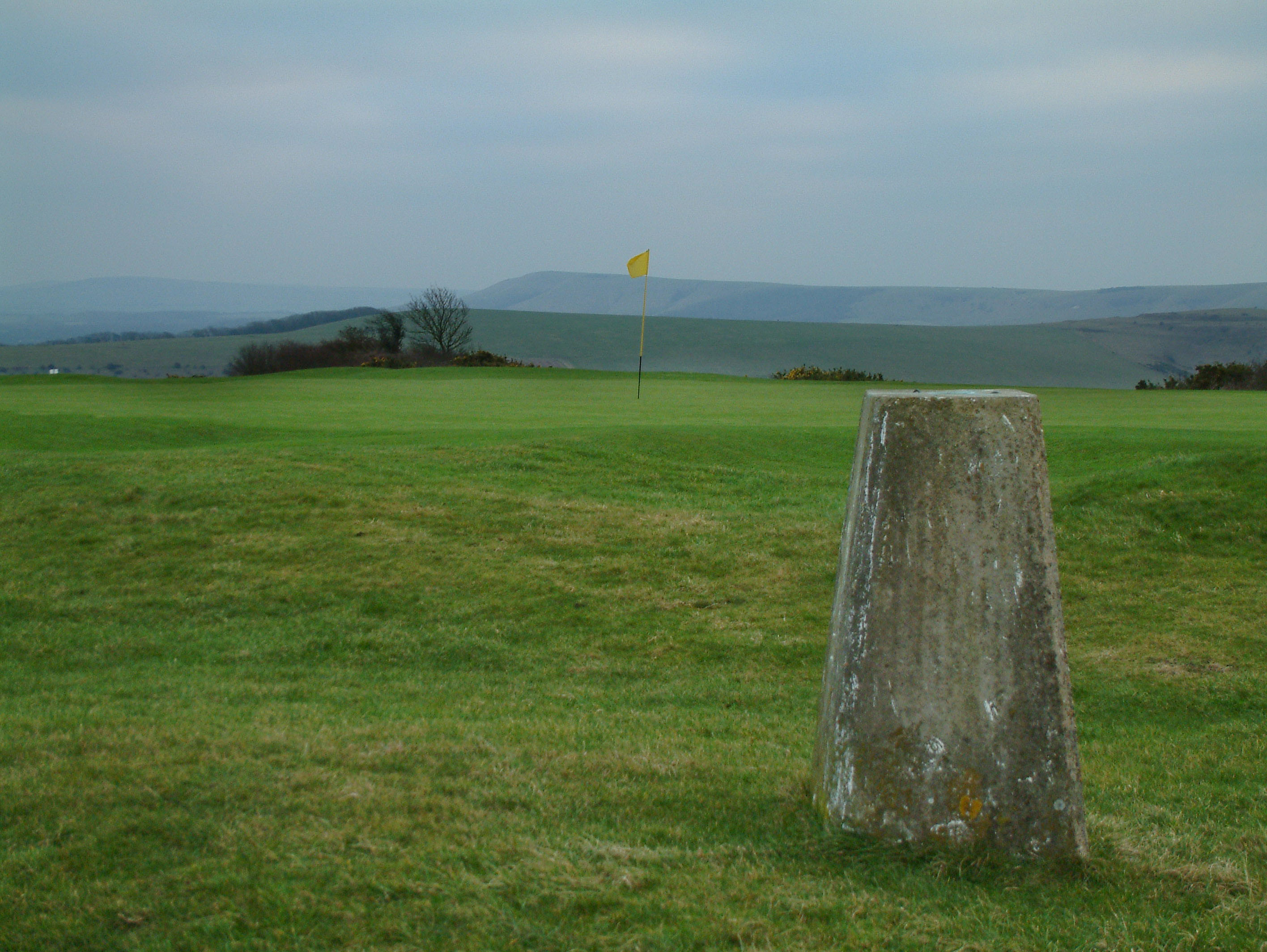The Holt
Wood, Forest in Sussex Lewes
England
The Holt

The Holt, Sussex, also known as the Wood or Forest, is a picturesque area located in the county of Sussex, England. Spanning approximately 200 acres, The Holt is a haven for nature enthusiasts and offers a serene and tranquil environment.
The woodland is primarily composed of native broadleaf trees, including oak, beech, and ash, which provide a rich and diverse habitat for various wildlife species. Visitors to The Holt can expect to encounter a wide array of flora and fauna, including bluebells, foxes, badgers, and an array of bird species.
The forest is crisscrossed with numerous well-maintained trails, making it an excellent location for walking, hiking, and exploring. These trails offer stunning views of the surrounding countryside and are suitable for all levels of fitness.
In addition to its natural beauty, The Holt is also home to a number of historic features. The remnants of an ancient Roman road can be found within the forest, providing a glimpse into the area's past. There are also several well-preserved Iron Age hill forts nearby, adding to the historical significance of the area.
The Holt is a popular destination for families, as it offers a range of activities for children. There is a designated picnic area, where families can enjoy a meal while surrounded by nature. Additionally, there is a small playground and open spaces for children to play and explore.
Overall, The Holt, Sussex, is a stunning woodland area that offers a peaceful retreat from the hustle and bustle of everyday life. Whether you are a nature lover, history enthusiast, or simply seeking a place to relax and unwind, The Holt is sure to captivate and inspire.
If you have any feedback on the listing, please let us know in the comments section below.
The Holt Images
Images are sourced within 2km of 50.882043/0.068446629 or Grid Reference TQ4511. Thanks to Geograph Open Source API. All images are credited.
![Glynde Place [1] From the car parking area, this grassy path leads through the gardens to the house.
The Glynde Place estate is situated at the top of the village of Glynde, some 2½ miles east of Lewes. The house was built in 1569 from local flint, chalk and Caen stone. The estate has 10 acres of garden and 74 acres of parkland. The house is listed, grade I, with details at: <span class="nowrap"><a title="https://historicengland.org.uk/listing/the-list/list-entry/1221546" rel="nofollow ugc noopener" href="https://historicengland.org.uk/listing/the-list/list-entry/1221546">Link</a><img style="margin-left:2px;" alt="External link" title="External link - shift click to open in new window" src="https://s1.geograph.org.uk/img/external.png" width="10" height="10"/></span> The grounds are on the Register of Historic Parks and Gardens. Grade II*, with much history and detail at:
<span class="nowrap"><a title="https://historicengland.org.uk/listing/the-list/list-entry/1000307" rel="nofollow ugc noopener" href="https://historicengland.org.uk/listing/the-list/list-entry/1000307">Link</a><img style="margin-left:2px;" alt="External link" title="External link - shift click to open in new window" src="https://s1.geograph.org.uk/img/external.png" width="10" height="10"/></span>](https://s1.geograph.org.uk/geophotos/07/22/39/7223997_32bfd076.jpg)
![Glynde Place [2] The house is seen from the approach path from the car park.
The Glynde Place estate is situated at the top of the village of Glynde, some 2½ miles east of Lewes. The house was built in 1569 from local flint, chalk and Caen stone. The estate has 10 acres of garden and 74 acres of parkland. The house is listed, grade I, with details at: <span class="nowrap"><a title="https://historicengland.org.uk/listing/the-list/list-entry/1221546" rel="nofollow ugc noopener" href="https://historicengland.org.uk/listing/the-list/list-entry/1221546">Link</a><img style="margin-left:2px;" alt="External link" title="External link - shift click to open in new window" src="https://s1.geograph.org.uk/img/external.png" width="10" height="10"/></span> The grounds are on the Register of Historic Parks and Gardens. Grade II*, with much history and detail at:
<span class="nowrap"><a title="https://historicengland.org.uk/listing/the-list/list-entry/1000307" rel="nofollow ugc noopener" href="https://historicengland.org.uk/listing/the-list/list-entry/1000307">Link</a><img style="margin-left:2px;" alt="External link" title="External link - shift click to open in new window" src="https://s1.geograph.org.uk/img/external.png" width="10" height="10"/></span>](https://s0.geograph.org.uk/geophotos/07/22/40/7224000_f05209ec.jpg)
![Glynde Place [3] The east front of the house.
The Glynde Place estate is situated at the top of the village of Glynde, some 2½ miles east of Lewes. The house was built in 1569 from local flint, chalk and Caen stone. The estate has 10 acres of garden and 74 acres of parkland. The house is listed, grade I, with details at: <span class="nowrap"><a title="https://historicengland.org.uk/listing/the-list/list-entry/1221546" rel="nofollow ugc noopener" href="https://historicengland.org.uk/listing/the-list/list-entry/1221546">Link</a><img style="margin-left:2px;" alt="External link" title="External link - shift click to open in new window" src="https://s1.geograph.org.uk/img/external.png" width="10" height="10"/></span> The grounds are on the Register of Historic Parks and Gardens. Grade II*, with much history and detail at:
<span class="nowrap"><a title="https://historicengland.org.uk/listing/the-list/list-entry/1000307" rel="nofollow ugc noopener" href="https://historicengland.org.uk/listing/the-list/list-entry/1000307">Link</a><img style="margin-left:2px;" alt="External link" title="External link - shift click to open in new window" src="https://s1.geograph.org.uk/img/external.png" width="10" height="10"/></span>](https://s3.geograph.org.uk/geophotos/07/22/40/7224003_5478c9f8.jpg)
![Glynde Place [4] The garden wall and gate piers were built in 1760. On one side the wall is faced with squared knapped flints with blind arches of red brick and gate piers of squared knapped flints edged with red brick. The other side of the wall is faced with cobbles and the gate piers are wholly of red brick. The piers are crowned with a lead figure of a wyvern. Listed, grade II*, with details at: <span class="nowrap"><a title="https://historicengland.org.uk/listing/the-list/list-entry/1043919" rel="nofollow ugc noopener" href="https://historicengland.org.uk/listing/the-list/list-entry/1043919">Link</a><img style="margin-left:2px;" alt="External link" title="External link - shift click to open in new window" src="https://s1.geograph.org.uk/img/external.png" width="10" height="10"/></span>
The Glynde Place estate is situated at the top of the village of Glynde, some 2½ miles east of Lewes. The house was built in 1569 from local flint, chalk and Caen stone. The estate has 10 acres of garden and 74 acres of parkland. The house is listed, grade I, with details at: <span class="nowrap"><a title="https://historicengland.org.uk/listing/the-list/list-entry/1221546" rel="nofollow ugc noopener" href="https://historicengland.org.uk/listing/the-list/list-entry/1221546">Link</a><img style="margin-left:2px;" alt="External link" title="External link - shift click to open in new window" src="https://s1.geograph.org.uk/img/external.png" width="10" height="10"/></span> The grounds are on the Register of Historic Parks and Gardens. Grade II*, with much history and detail at:
<span class="nowrap"><a title="https://historicengland.org.uk/listing/the-list/list-entry/1000307" rel="nofollow ugc noopener" href="https://historicengland.org.uk/listing/the-list/list-entry/1000307">Link</a><img style="margin-left:2px;" alt="External link" title="External link - shift click to open in new window" src="https://s1.geograph.org.uk/img/external.png" width="10" height="10"/></span>](https://s1.geograph.org.uk/geophotos/07/22/40/7224005_d61e403d.jpg)
![Glynde Place [5] The garden wall and gate piers were built in 1760. On one side the wall is faced with squared knapped flints with blind arches of red brick and gate piers of squared knapped flints edged with red brick. The other side of the wall is faced with cobbles and the gate piers are wholly of red brick. The piers are crowned with a lead figure of a wyvern. Listed, grade II*, with details at: <span class="nowrap"><a title="https://historicengland.org.uk/listing/the-list/list-entry/1043919" rel="nofollow ugc noopener" href="https://historicengland.org.uk/listing/the-list/list-entry/1043919">Link</a><img style="margin-left:2px;" alt="External link" title="External link - shift click to open in new window" src="https://s1.geograph.org.uk/img/external.png" width="10" height="10"/></span>
The Glynde Place estate is situated at the top of the village of Glynde, some 2½ miles east of Lewes. The house was built in 1569 from local flint, chalk and Caen stone. The estate has 10 acres of garden and 74 acres of parkland. The house is listed, grade I, with details at: <span class="nowrap"><a title="https://historicengland.org.uk/listing/the-list/list-entry/1221546" rel="nofollow ugc noopener" href="https://historicengland.org.uk/listing/the-list/list-entry/1221546">Link</a><img style="margin-left:2px;" alt="External link" title="External link - shift click to open in new window" src="https://s1.geograph.org.uk/img/external.png" width="10" height="10"/></span> The grounds are on the Register of Historic Parks and Gardens. Grade II*, with much history and detail at:
<span class="nowrap"><a title="https://historicengland.org.uk/listing/the-list/list-entry/1000307" rel="nofollow ugc noopener" href="https://historicengland.org.uk/listing/the-list/list-entry/1000307">Link</a><img style="margin-left:2px;" alt="External link" title="External link - shift click to open in new window" src="https://s1.geograph.org.uk/img/external.png" width="10" height="10"/></span>](https://s3.geograph.org.uk/geophotos/07/22/40/7224011_aa5369d4.jpg)
![Glynde Place [6] The stables were built in 1760 and consist of two buildings at right angles to each other, joined by a flanking wall. One of the buildings stands across the carriage drive. Constructed of squared knapped flint with red brick quoins. There is a central carriage arch in red brick. The roof is of slate, with a turret over the archway. Listed, grade I, with details at: <span class="nowrap"><a title="https://historicengland.org.uk/listing/the-list/list-entry/1221605" rel="nofollow ugc noopener" href="https://historicengland.org.uk/listing/the-list/list-entry/1221605">Link</a><img style="margin-left:2px;" alt="External link" title="External link - shift click to open in new window" src="https://s1.geograph.org.uk/img/external.png" width="10" height="10"/></span>
The Glynde Place estate is situated at the top of the village of Glynde, some 2½ miles east of Lewes. The house was built in 1569 from local flint, chalk and Caen stone. The estate has 10 acres of garden and 74 acres of parkland. The house is listed, grade I, with details at: <span class="nowrap"><a title="https://historicengland.org.uk/listing/the-list/list-entry/1221546" rel="nofollow ugc noopener" href="https://historicengland.org.uk/listing/the-list/list-entry/1221546">Link</a><img style="margin-left:2px;" alt="External link" title="External link - shift click to open in new window" src="https://s1.geograph.org.uk/img/external.png" width="10" height="10"/></span> The grounds are on the Register of Historic Parks and Gardens. Grade II*, with much history and detail at:
<span class="nowrap"><a title="https://historicengland.org.uk/listing/the-list/list-entry/1000307" rel="nofollow ugc noopener" href="https://historicengland.org.uk/listing/the-list/list-entry/1000307">Link</a><img style="margin-left:2px;" alt="External link" title="External link - shift click to open in new window" src="https://s1.geograph.org.uk/img/external.png" width="10" height="10"/></span>](https://s1.geograph.org.uk/geophotos/07/22/49/7224997_ec0437aa.jpg)
![Glynde Place [7] Part of the gardens.
The Glynde Place estate is situated at the top of the village of Glynde, some 2½ miles east of Lewes. The house was built in 1569 from local flint, chalk and Caen stone. The estate has 10 acres of garden and 74 acres of parkland. The house is listed, grade I, with details at: <span class="nowrap"><a title="https://historicengland.org.uk/listing/the-list/list-entry/1221546" rel="nofollow ugc noopener" href="https://historicengland.org.uk/listing/the-list/list-entry/1221546">Link</a><img style="margin-left:2px;" alt="External link" title="External link - shift click to open in new window" src="https://s1.geograph.org.uk/img/external.png" width="10" height="10"/></span> The grounds are on the Register of Historic Parks and Gardens. Grade II*, with much history and detail at:
<span class="nowrap"><a title="https://historicengland.org.uk/listing/the-list/list-entry/1000307" rel="nofollow ugc noopener" href="https://historicengland.org.uk/listing/the-list/list-entry/1000307">Link</a><img style="margin-left:2px;" alt="External link" title="External link - shift click to open in new window" src="https://s1.geograph.org.uk/img/external.png" width="10" height="10"/></span>](https://s2.geograph.org.uk/geophotos/07/22/49/7224998_de9dcbdd.jpg)
![Glynde Place [8] The carriage drive leading to the entrance from the road. Seen from the stables.
The Glynde Place estate is situated at the top of the village of Glynde, some 2½ miles east of Lewes. The house was built in 1569 from local flint, chalk and Caen stone. The estate has 10 acres of garden and 74 acres of parkland. The house is listed, grade I, with details at: <span class="nowrap"><a title="https://historicengland.org.uk/listing/the-list/list-entry/1221546" rel="nofollow ugc noopener" href="https://historicengland.org.uk/listing/the-list/list-entry/1221546">Link</a><img style="margin-left:2px;" alt="External link" title="External link - shift click to open in new window" src="https://s1.geograph.org.uk/img/external.png" width="10" height="10"/></span> The grounds are on the Register of Historic Parks and Gardens. Grade II*, with much history and detail at:
<span class="nowrap"><a title="https://historicengland.org.uk/listing/the-list/list-entry/1000307" rel="nofollow ugc noopener" href="https://historicengland.org.uk/listing/the-list/list-entry/1000307">Link</a><img style="margin-left:2px;" alt="External link" title="External link - shift click to open in new window" src="https://s1.geograph.org.uk/img/external.png" width="10" height="10"/></span>](https://s3.geograph.org.uk/geophotos/07/22/49/7224999_39e54a32.jpg)
![Parish church [1] The Anglican parish church of St Mary the Virgin was built in 1765. The entrance front is of knapped flint on an ashlar base with a pediment. The other walls are of cobbles on an ashlar base. The interior retains its original fittings. The gallery was inserted in 1841 and the chancel was repaired in 1894. Listed, grade II*, with details at: <span class="nowrap"><a title="https://historicengland.org.uk/listing/the-list/list-entry/1043918" rel="nofollow ugc noopener" href="https://historicengland.org.uk/listing/the-list/list-entry/1043918">Link</a><img style="margin-left:2px;" alt="External link" title="External link - shift click to open in new window" src="https://s1.geograph.org.uk/img/external.png" width="10" height="10"/></span>
The Glynde Place estate is situated at the top of the village of Glynde, some 2½ miles east of Lewes. The house was built in 1569 from local flint, chalk and Caen stone. The estate has 10 acres of garden and 74 acres of parkland. The house is listed, grade I, with details at: <span class="nowrap"><a title="https://historicengland.org.uk/listing/the-list/list-entry/1221546" rel="nofollow ugc noopener" href="https://historicengland.org.uk/listing/the-list/list-entry/1221546">Link</a><img style="margin-left:2px;" alt="External link" title="External link - shift click to open in new window" src="https://s1.geograph.org.uk/img/external.png" width="10" height="10"/></span> The grounds are on the Register of Historic Parks and Gardens. Grade II*, with much history and detail at:
<span class="nowrap"><a title="https://historicengland.org.uk/listing/the-list/list-entry/1000307" rel="nofollow ugc noopener" href="https://historicengland.org.uk/listing/the-list/list-entry/1000307">Link</a><img style="margin-left:2px;" alt="External link" title="External link - shift click to open in new window" src="https://s1.geograph.org.uk/img/external.png" width="10" height="10"/></span>](https://s2.geograph.org.uk/geophotos/07/22/50/7225002_26126d8d.jpg)
![Glynde Place [9] The view from the house, looking northeast.
The Glynde Place estate is situated at the top of the village of Glynde, some 2½ miles east of Lewes. The house was built in 1569 from local flint, chalk and Caen stone. The estate has 10 acres of garden and 74 acres of parkland. The house is listed, grade I, with details at: <span class="nowrap"><a title="https://historicengland.org.uk/listing/the-list/list-entry/1221546" rel="nofollow ugc noopener" href="https://historicengland.org.uk/listing/the-list/list-entry/1221546">Link</a><img style="margin-left:2px;" alt="External link" title="External link - shift click to open in new window" src="https://s1.geograph.org.uk/img/external.png" width="10" height="10"/></span> The grounds are on the Register of Historic Parks and Gardens. Grade II*, with much history and detail at:
<span class="nowrap"><a title="https://historicengland.org.uk/listing/the-list/list-entry/1000307" rel="nofollow ugc noopener" href="https://historicengland.org.uk/listing/the-list/list-entry/1000307">Link</a><img style="margin-left:2px;" alt="External link" title="External link - shift click to open in new window" src="https://s1.geograph.org.uk/img/external.png" width="10" height="10"/></span>](https://s0.geograph.org.uk/geophotos/07/22/50/7225004_a621cc80.jpg)


The Holt is located at Grid Ref: TQ4511 (Lat: 50.882043, Lng: 0.068446629)
Administrative County: East Sussex
District: Lewes
Police Authority: Sussex
What 3 Words
///wordplay.smooth.dribble. Near Ringmer, East Sussex
Nearby Locations
Related Wikis
Glyndebourne Festival Opera
Glyndebourne Festival Opera is an annual opera festival held at Glyndebourne, an English country house near Lewes, in East Sussex, England. == History... ==
Glyndebourne
Glyndebourne () is an English country house, the site of an opera house that, since 1934, has been the venue for the annual Glyndebourne Festival Opera...
Ringmer A.F.C.
Ringmer Association Football Club is a football club based in Ringmer, England. They are currently members of the Mid-Sussex League Premier Division and...
King's Academy Ringmer
King's Academy Ringmer is an academy school and a specialist technology college. It is located in the village of Ringmer, East Sussex, England. The school...
Ringmer
Ringmer is a village and civil parish in the Lewes District of East Sussex, England. The village is 3 miles (4.8 km) east of Lewes. Other small settlements...
St Mary's Church, Glynde
The Church of St Mary the Virgin is a Grade II* listed Anglican church in the village of Glynde in East Sussex. It was built in the 1760s by Richard Trevor...
Glynde Place
Glynde Place is an Elizabethan Manor House at Glynde in East Sussex, England. Situated in the South Downs National Park, it is the family home of the Viscounts...
Cliffe Hill
Cliffe Hill is a hill to the east of the town of Lewes in East Sussex, England. It is impressive on its western edge, where it looms over Lewes. Its summit...
Nearby Amenities
Located within 500m of 50.882043,0.068446629Have you been to The Holt?
Leave your review of The Holt below (or comments, questions and feedback).











